While working at the office, I am constantly sitting at my desk, looking at the computer screen and typing my heart out. But I knew I needed to change up my routine when my carpal tunnel began to flare up last month. It had been a while since I had my last flare-up, but this time it felt even worse than usual. I tried icing it, wearing wrist braces, and changing my posture without improvement. The doctors couldn’t help me much other than offer corticosteroid injections and surgical treatment. I didn’t want to go through all of that trouble to possibly injure my wrist even more. After extensive research online, I found that more and more people are turning to alternative treatments such as acupuncture and acupressure. Soon, you’ll learn what they are and how you can treat acupressure points for wrist pain for relief.
What Can Cause Wrist Pain Without Injury?

Your wrist is one of the most delicate and complex parts of your body. It is made up of a system of carpal bones and component joints that help the wrist move and rotate, making things more complicated when determining the cause of your wrist pain. If not caused by physical trauma, wrist injury can arise as a result of repetitive movements, such as typing and writing. Although the act of typing and writing are not damaging in and of themselves, they can be if performed with poor ergonomics. Other risk factors that make you more prone to wrist pain include sports, pregnancy, diabetes, rheumatoid arthritis, obesity, and gout. People often develop wrist sprains, tendonitis, tenosynovitis, and carpal tunnel syndrome, to name a few conditions. They might suffer from persistent wrist pain, arm weakness, inability to move the wrist, swelling, numbness, and tingling. Before you consider treating the acupressure points for wrist pain, it is highly recommended that you consult a medical physician for an accurate diagnosis.
Is Acupuncture Good For Wrist Pain?
Acupuncture is the traditional Chinese medicine (TCM) practice of healing physical ailments by balancing the flow of energy (qi) in the body. Pain, swelling, inflammation, and other disorders that crop up disturb the flow of energy. Acupuncture uses fine needles to stimulate acupressure points to relieve these imbalances and ultimately heal the body. There is some promising research on acupuncture treatment for wrist pain. Patients that have undergone this treatment have seen significant relief from wrist pain even after a few months. It is still up in the air on how effective it is long-term, but like most acupuncture treatments, people often get more relief the more sessions they go to.
Can You Use Acupressure For Wrist Pain?

If you don’t want to commit to acupuncture, acupressure is a great alternative. In acupressure, you replace needles with massaging techniques. The upside to this kind of treatment is that you don’t need a licensed professional to perform it. You can do it wherever you are, whether it’d be in the comfort of your own home or out and about in the city. Acupressure follows the same ideas and principles that acupuncture does, so you would be targeting the same acupressure points for wrist pain as a professional would in a treatment session. To perform acupressure, first, make sure that you are in a comfortable position and have enough room to do it. Then, apply a moderate amount of pressure and massage the acupressure points for wrist pain in small, circular motions for about thirty seconds to one minute. You can repeat treatment throughout the day and as often as you like. If you are having trouble administering it to yourself, you can try using an object (like the rounded end of a cane or tennis ball) or have a friend or family member do it for you.
What Pressure Point Relieves Hand Pain?
Besides the acupressure points for wrist pain below, there are other points for hand pain that you can also incorporate into your treatment regimen, including:
- TE-5 (“waiguan” or “outer pass”)
- LU-10 (“yuji” or “fish border”)
- LI-4 (“he gu” or “junction valley”)
- PC-8 (“laogong” or “palace of toil”)
- TE-4 (“yangchi” or “yang pool”)
Acupressure Points For Wrist Pain
Acupoint: LI-5 (Other Names: Large Intestine-5/Yang Xi/Yang Stream)
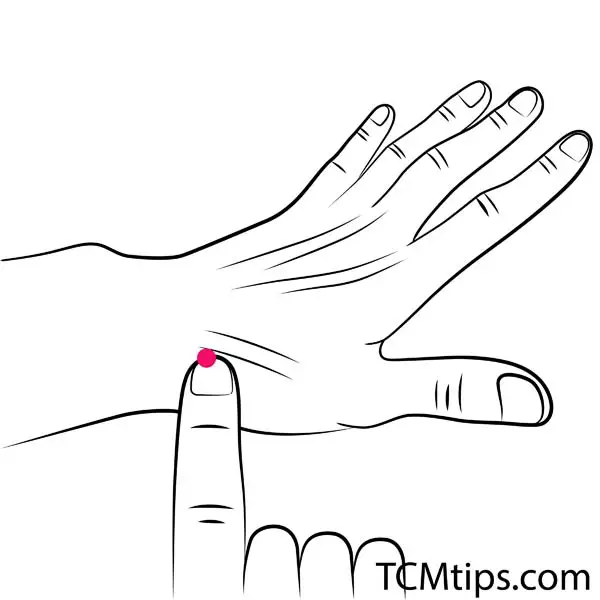
LI-5, also known as “yangxi” or “yang stream”, is located in the depression between the m. extensor pollicis longus and brevis tendons. It is one of the most effective pressure points in performing acupressure for carpal tunnel, wrist pain, and weakness. It can also help with frontal headaches, congestion, and eye pain.
Acupoint: PC-6 (Other Names: Pericardium-6/Nei Guan/Inner Pass)
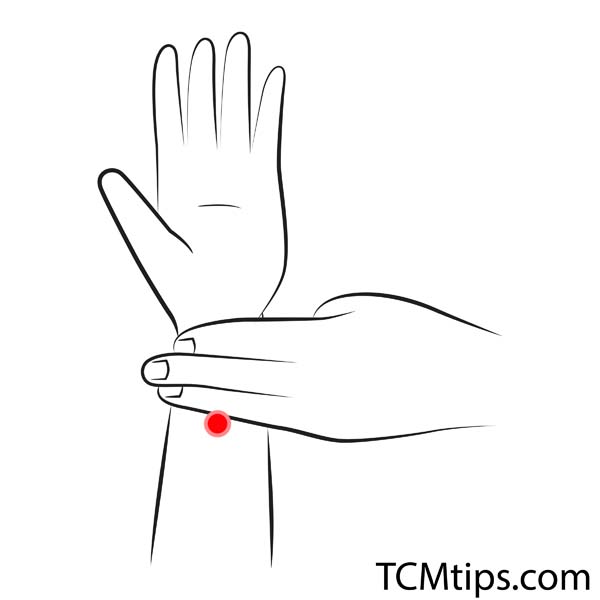
PC-6, also known as “neiguan” or “inner pass”, is located about three finger widths below the wrist on your inner forearm. This acupoint’s location makes it an ideal point to treat carpal tunnel syndrome as it helps relieve any pressure or stress on the median nerve leading up into the wrist. However, PC-6 is more known for the treatment of nausea, abdominal pain, and headaches. It is also one of the acupressure points for thyroid.
Acupoint: LI-10 (Other Names: Large Intestine-10/Shou San Li/Arm Three Miles)
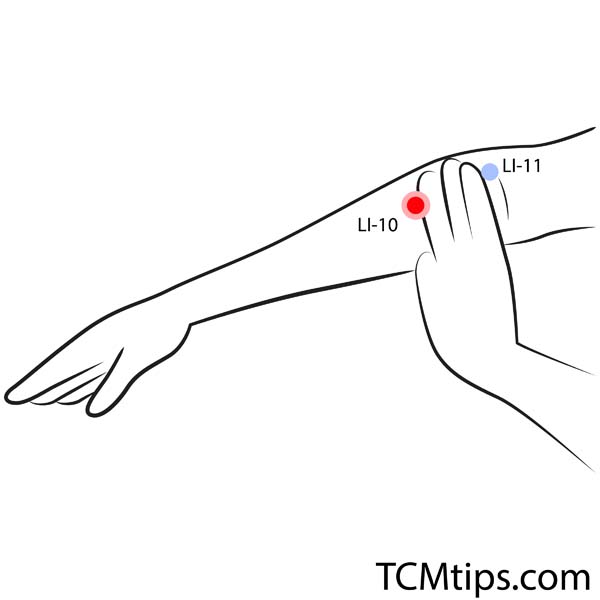
LI-10, also known as “shousanli” or “arm three miles”, is located three fingers below the elbow crease. Professionals often target this point to treat general aches and pains in the shoulders, elbows, and wrists. It can even help with acupressure for tennis elbow.
Acupoint: LI-13 (Other Names: Large Intestine-13/Shou Wu Li/Arm Five Miles)
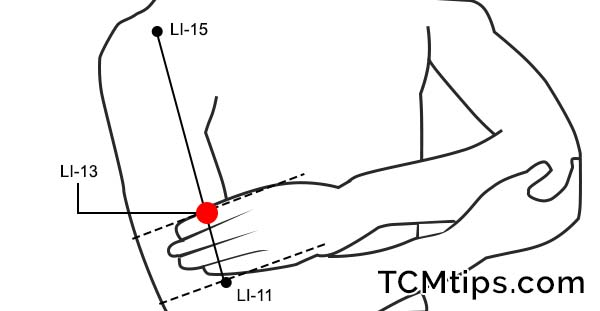
LI-13, also known as “shouwuli” or “arm five miles”, is located on the outer part of the arm and 4 fingers above the elbow crease. You can use it to relieve pain in the wrist, elbow, and upper arm. Other clinical indications include difficulty breathing, coughing, and scrofula.
Acupoint: SI-5 (Other Names: Small Intestine-5/Yang Gu/Yang Valley)
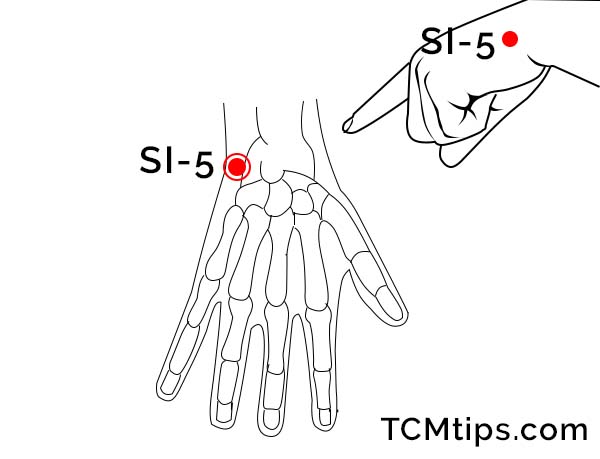
SI-5, also known as “yanggu” or “yang valley”, is located at the ulnar end of the transverse crease on the outer part of the wrist. This acupoint is used specifically for hand and wrist pain but is just as effective for neck and shoulder pain, toothache, and lockjaw.
Acupoint: LU-6 (Other Names: Lung-6/Kong Zui/Maximum Opening)
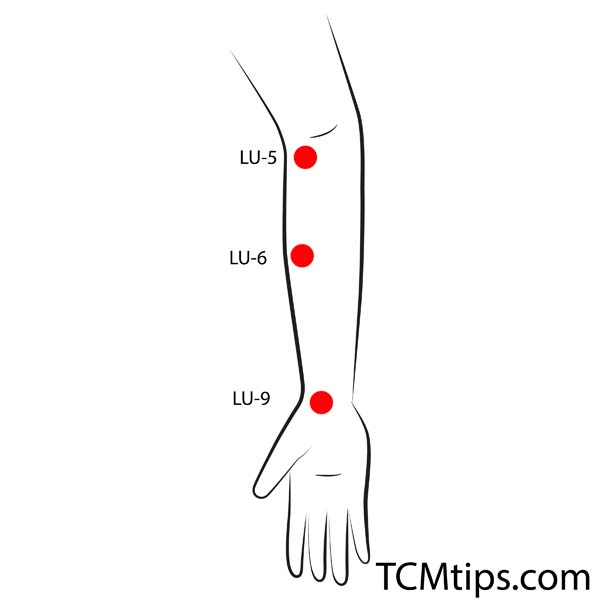
LU-6, also known as “kongzui” or “collection hole”, is located on the inner forearm 7 cun above the wrist’s crease. Like LI-10 and LI-13, it is more of a general pressure point for arm pain but helps to indirectly relieve wrist pain. Otherwise, it is used for sore throat, nosebleeds, bleeding hemorrhoids and is one of the acupressure points for cough.

Acupoint: PC-7 (Other Names: Pericardium-7/Da Ling/Great Mound)
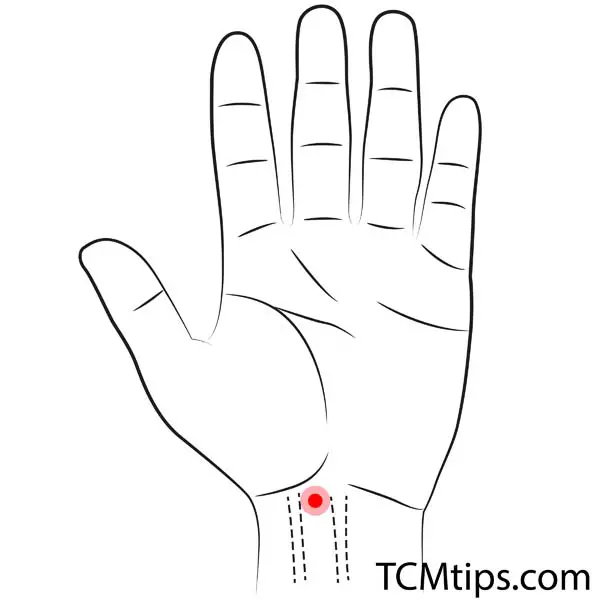
PC-7, also known as “daling” or “great mound”, is located in the middle of the inner wrist. The pc7 acupuncture point clears ying and blood heat, which helps with inflammation that stems from wrist pain.

Try our Anti-Aging Gua Sha Tool designed to bring out your skin’s natural glow.
Best Gua Sha Product- Anti-Aging: The tool is designed to target 11 specific aging signs such as wrinkles and sagging skin. By following the 7-step routine, users can improve skin firmness and reduce fine lines naturally.
- Enhances Skincare Routine: It works effectively with serums and lotions, boosting absorption and efficacy of skincare products.
- Visible Skin Improvement: Users can expect a smoother complexion, reduced puffiness, and a more youthful appearance.
 P. Sze
P. Sze 
















